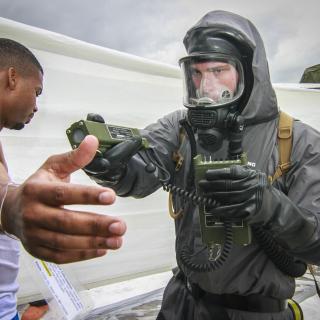Advertisement
Mental health, suicides and addiction were serious problems before the pandemic, and the fallout threw gas on a raging fire.
Thankfully, the Ohio Department of Mental Health and Addiction Services (OhioMHAS), with help from the federal government, rolled out ‘988’ back in July, a nationwide suicide and crisis lifeline. Ohioans in all 88 counties can now call or text 988 for free 24/7 crisis support.
“Mental health is just as important as physical health,” said Gov. Mike DeWine back in July.
“The 988 program is the front door into Ohio’s behavioral healthcare response,” stated OhioMHAS in a press release.
This mental health hotline, which was previously the National Suicide Prevention Lifeline, fielded nearly 80,000 calls from Ohioans in 12 months prior to the 988 roll out. OhioMHAS is predicting 988 could receive 200,000 calls from Ohioans for its first year.
When called from Columbus or Franklin County, 988 now connects to two local centers, and if those are busy, to a national line. Franklin County is the only Ohio county with two 988 call centers, as the state has 19 in total.
The two Franklin County centers are Netcare and the North Central Mental Health Services.
One reason for 988 was to divert calls away from 911 and avoid police involvement so to let a mental health professional handle any crisis. Potentially sending a mobile crisis response team instead of police. Another reason for 988 is to relieve crowded emergency rooms.
But the good intentions of 988 and its roll out have been far from perfect, which was expected. Calling 988 shouldn’t mean a visit by police or a $1,000 ambulance ride to the hospital, unless absolutely necessary.
According to Government Executive, an Instagram post from earlier this month – one which has garnered 250,000 likes – stated “988 is not friendly. Don’t call it, don’t post it, don’t share it, without knowing the risks.”
What are those risks? Condescending and bitter police officers potentially showing up at your door, or “involuntary” admission to emergency or psychiatric hospitals. In 2017, the Health Care Cost Institute reported the average cost for a week stay at a mental health institution was…over $9,000.
Because the Columbus Division of Police has not responded to Free Press inquiries since pre-George Floyd, it’s difficult to know if any recent local 988 calls were followed with a visit from officers.
Nonetheless, OhioMHAS insists 988 “was created to alleviate the necessity of police involvement, and a police officer will not be dispatched to your location.”
But OhioMHAS goes on to say, “Research has shown that 80% of calls to (988) can be managed and resolved over the phone; however in the rare circumstance where there is imminent risk to someone’s life, the call specialists may need to involve behavioral health mobile response or 911 for an immediate and safe response. In some rural areas of Ohio that do not have behavioral health mobile response, clinicians may respond with a local sheriff’s deputy in a co-responder model of care.”
Funding for Ohio’s 988 has been allocated through June 2023, says OhioMHAS, while future funding could depend on state legislation. The Ohio General Assembly introduced House Bill 468 earlier this year which would establish a fund to pay for 988 in the state treasury.
House Bill 468 was approved by the Ohio House and now in committee within the Ohio Senate. If passed by the Ohio Senate it will be sent to Governor DeWine.



